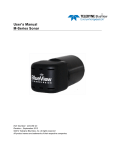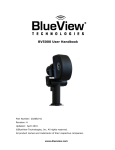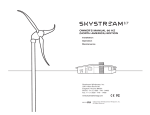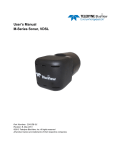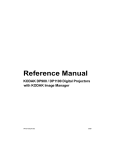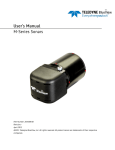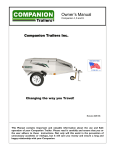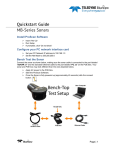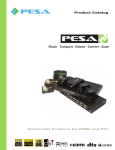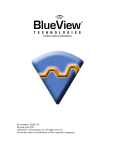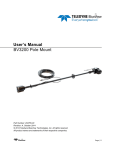Download User Manual/SeaNet - BlueView Technologies, Inc.
Transcript
User’s Handbook DP900-90-SN BlueView Document 202597-01 © 2003-2008 BlueView Technologies, Inc. All rights reserved. Printed in USA All product names are trademarks of their respective companies BlueView Technologies has made every effort to ensure the accuracy and completeness of this document; however, because ongoing development efforts are made to continually improve the capabilities of our products, we cannot guarantee the accuracy of the contents of this document. We disclaim liability for errors, omissions, or future changes herein. Copyright © 2003-2008 BlueView Technologies Corp. All rights reserved. No part of this publication may be copied, reproduced, or translated, without the prior written consent of BlueView Technologies. No part of this publication may be stored or transmitted in any electronic form without the prior consent of BlueView Technologies. Any unauthorized use is a violation of copyright laws. Warning! This device should not be used as a navigational aid to prevent collision, grounding, boat damage, or personal injury. Warning! This product contains lead, a chemical known to the state of California to cause cancer, birth defects and other reproductive harm. Handling and/or opening this unit may result in exposure to lead, in the form of solder. Warning! Disassembly and repair of this electronic unit should only be performed by authorized service personnel. Any modification of the serial number or attempt to repair the original equipment or accessories by unauthorized individuals will void the warranty. Warning! Changes or modifications to this unit not expressly approved by the party responsible for compliance may void the user’s authority to operate this equipment. Warning! This equipment contains High Voltage electronics. Tampering with or using damaged equipment could lead to serious injury. Warranty Information The Sonar is backed by a standard 12-month parts and labor warranty policy. For more information on safety and/or maintenance issues please call BlueView Technologies at 206.545.7260. 1 Table of Contents Introduction ........................................................................3 About the BlueView Sonar........................................................................... 3 System Contents ..................................................................4 Understanding Imaging Sonar ................................................5 What is Imaging Sonar? ............................................................................. 5 How do I Interpret the Sonar Images? .......................................................... 5 I. Sonar System Installation .................................................6 Install Software on your PC ......................................................................... 6 Set your PC’s network card IP address .......................................................... 7 Assemble System ...................................................................................... 8 The following are the recommended installation procedures for the Sonar system....... 9 Firewall Configuration................................................................................. 9 II. Sonar Installation ........................................................ 10 Mount the Sonar...................................................................................... 10 Mounting Method............................................................................................. Mounting Location ........................................................................................... Sonar Up-Down Orientation .............................................................................. Sonar Angle.................................................................................................... 10 10 10 11 III. Trouble Shooting...........................................................3 If the ProViewer Software cannot see the sonar head: .................................... 3 If the image updates seem slow: ................................................................. 5 IV. FAQ.............................................................................6 Will running the sonar out of the water damage the unit?........................................ 6 Why does the sonar image look like the surface of a pond? ..................................... 6 Why can I only see a slice of the bottom? ............................................................. 6 V. Appendix A: Technical Specifications ................................7 DP900-90 Sonar ........................................................................................ 7 DP900-90 Sonar Outline Drawing ................................................................. 8 VI. Appendix B: ProViewer Advanced Networking....................9 Changing the Sonar IP Settings ................................................................... 9 When you forget a sonar’s IP address ......................................................... 11 Firewall Software ..................................................................................... 11 2 Introduction Congratulations on your purchase of a BlueView 2D Miniature Multibeam Imaging Sonar system. This manual covers operations of the P900-90-SN sonar systems. BlueView 2D imaging sonar provide streaming sonar imagery, making it easy to search and navigate in low and zero visibility water. BlueView has coupled high-performance imaging capability with a powerful software package creating one of the worlds most versatile underwater imaging systems available today. Advanced sonar technology, rugged design, and powerful software are just a few highlights of your sonar system. This manual explains imaging sonar interpretation and provides instructions on the installation and operation of your sonar system. For detailed information on using the sonar imaging software, please see the ProViewer Software Handbook found both on the software CD as well as under the software’s help menu. About the BlueView Sonar Your sonar is designed as a general-purpose underwater imaging sonar specifically designed for ROV mounted operation. The DP900-90 sonar are rated to 4000 meters. With its Ethernet interface and user-friendly software, the sonar system is designed to be just as easy to use as it is functional. 3 System Contents Verify that your DP900-SN system includes the following components: Component DP900-90 Sonar Module with SN SeaNet bulkhead connector 25 ft Sonar-to-surface test Cable (RJ45 to Impulse Connector) POE Box (Power Injector for Bench-Top Testing) 7 ft Black Ethernet Cable SeaNet to Impulse Adapter (Adapter for Bentch-Top Testing) User Handbook Quickstart Guide Software CD Hardigg “Storm” Carry Case 4 Understanding Imaging Sonar What is Imaging Sonar? Many people are familiar with scanning type sonar, which employ mechanical rotation of a single acoustic beam over an imaging area. This works well when used on stationary platforms and/or when imaging static targets. They become much less useful when working from a moving platform and/or trying to image moving targets since any motion can cause errors in the final image. By comparison, BlueView imaging sonar are multi-beam sensors, which form many small acoustic beams at once. This allows them to work well from stationary and moving platforms. An imaging sonar can produce several high-quality images per second, making it possible to get movie-like imagery from the sonar. How do I Interpret the Sonar Images? Imagine a flashlight lying on a table and an object such as a coffee cup located in front of the flashlight. If you look down on this scene, you will see a bright area where light is reflecting off the face of the coffee cup. You will also see a dark shadow behind the coffee cup where light is unable to reach. The same idea can be applied to a BlueView imaging sonar by replacing the light source with a sound source. Bright areas on the sonar image are the result of objects reflecting sound, while dark areas are acoustic shadows resulting from an object blocking the sound. The two figures below provide an example of how a given scene would appear when viewed visually and with highdefinition imaging sonar: Dark acoustic shadow Visual image of 3 can-shaped objects on a square platform Bright reflections from target The same scene as seen through a BlueView imaging sonar 5 I. Sonar System Installation When you first receive your sonar system follow these steps to verify you can operate it. See the ProViewer Software Handbook found both on the software CD as well as under the software’s help menu for more information about your ProViewer Software. Install Software on your PC To install ProViewer, just insert the ProViewer CD into your computer’s CD-ROM drive. You may also launch the installation by double clicking on setup.exe in the CD’s root directory. Follow the instructions to complete the installation. If you have a personal firewall enabled you may receive a warning message saying that ProViewer is attempting to send information to the Internet. These messages are caused by ProViewer looking for BlueView sonar on your network. BlueView recommends that you select the option that will always allow ProViewer to access the network. For example, in the image below, click Unblock. 6 Set your PC’s network card IP address In Windows, open the ‘Control Panel’. In the control panel, open the ‘Network connections’ folder. In ‘Network connections’ folder, select the interface you’ll be attaching the sonar to. This interface is commonly called ‘Local Area Connection’, but might have another name in your particular application. In the ‘Local Area Connection’ window, select ‘Properties’ In the ‘Properties’ window, select ‘Internet Protocol’ and click on the ‘Properties’ button. In the resultant ‘Internet Protocol (TCP/IP) Properties’ window, configure it as shown below: After you’ve set the IP address and Subnet mask as shown, close all the windows you just opened. 7 Assemble System After installing the PC software found on the included CD, the sonar system can be connected for bench-top test. The standard sonar package comes with everything needed to get up and running quickly. The only additional items required are an AC power source (your typical wall plug). The figure below depicts how the components are interconnected. Your sonar may look different than the one depicted below. User Computer Sonar Head Ethernet Cable SeaNet to SeaNet Cable POE Box Power injector for test setup SeaNet Adapter 25 ft Test Cable Required Cables: AC Power Cable 25ft Bench-Top Test Cable Standard Ethernet Cable 8 The following are the recommended installation procedures for the Sonar system. 1. Inspect all cable connector contacts for lack of moisture, corrosion, or damage before assembling the system. 2. Connect the standard SeaNet cable between the sonar and “SeaNet to Impulse Adapter”. 3. Connect the 10 pin underwater connector on the “25ft Bench-Top Test Cable” to the mating bulkhead connector “SeaNet to Impulse Adapter”. Make sure that all o-rings are present and in good shape before making the connection. Once connected, ensure that the connector is fully engaged and tightened. 4. Connect the RJ45 connector on the Sonar-to-PC Test Cable to the “SONAR J1” port on the POE Box. 5. Connect one end of the Standard Ethernet Cable to the “PC J2” port on the POE Box. 6. Connect the other end of the Standard Ethernet Cable to the ethernet port on the User computer. 7. Plug the POE box power cable into a standard 120 VAC wall outlet. The Sonar Head will power up and initialize itself in approximately 40 seconds. Note: when power cycling, correct operation requires that power be cycled from the AC side of the POE box. If you cycle the power off briefly, make sure you leave the power unplugged for at least 10 seconds. 8. Turn on your computer. Firewall Configuration ProViewer Software communicates with the Sonar Head using standard networking protocols. If your PC has firewall software, you may see a warning ‘popup’ that asks permission to allow the ProViewer Software to connect to the Sonar. In that case, you may need to configure your PC’s firewall to allow communications between your Sonar and your PC using TCP and UDP on port 1149. Refer to your anti-virus/firewall software vendor or your computer tech support resources for assistance with your antivirus/firewall software. 9 II. Sonar Installation Mount the Sonar After installing your software and running your Sonar for the first time, you’re ready to put the Sonar into the water. Mounting Method In order to do this, the sonar needs a mounting structure to hold it securely in its underwater environment. This mount can either be one purchased from BlueView, or a customer supplied mount. The preferred mounting method is a clamp type fixture around the cylindrical portion of the unit. For custom mounts, refer to the technical drawings provided in the Appendix of this manual for sonar dimensions. Mounting Location 1. The sonar images like a camera out of the front of the nosecone. It should be mounted looking forward, preferably on the same pan-and-tilt as the ROV’s main camera. Sonar Up-Down Orientation Use the stickers and connector placement on the rear endcap of the sonar to determine the up-down orientation of the sonar. Top Bottom 10 Sonar Angle To achieve optimal performance while imaging targets and/or the bottom at a given depth, the angle that the sonar is tilted down from the surface is important. This issue is demonstrated in the figures below. On the left, the sonar is tilted down at a steep angle that provides only a narrow field of view of the bottom. The sonar in the righthand figure is set at a much shallower angle that provides both a better perspective on targets and a larger field-of-view of the bottom. Water Line Small Area Water Line Large Area Tilt Angle Tilt Angle The sonar’s steep tilt-angle in this figure produces imagery of a narrow strip of the bottom. The sonar’s shallow tilt-angle in this figure produces an image of the bottom over a broad area. In general, shallower tilt-angles, which give larger areas of bottom imaging, are preferred. In selecting a tilt angle, refer to the diagram and chart below. Target Depth (ft) Water Line Tilt Angle Refer to this diagram and chart to select the appropriate sonar tilt angle during mounting for optimal imaging performance at target depth. Approximate Tilt Angle (Deg) 0 0 10 3 20 8 30 10 40 10 60 15 80 20 11 Integrate the Sonar Integrate Sonar through ROV System Sonar Head User Computer Standard SeaNet Cable Ethernet Cable ROV SeaNet Network Figure shows typical sonar/ROV integration into SeaNet based system Test the System z z z Apply power to the system Start ProViewer software Once the sonar is fully powered up (45 seconds) click the connect button Set IP Address on PC and Sonar to match SeaNet Network If the SeaNet network is set to something other than 192.168.1.* then it may be necessary to set the PC and Sonar IP address so they match the SeaNet network. See Appendix B, “Advanced Network Settings,” in the DP900-MSSJ manual for details on how to accomplish this. Precautions z z When power cycling the sonar, be sure to allow 10 seconds of ‘off time’ before turning the sonar back on. If your network configuration requires a different sonar IP address than the factory default, you can change it within the ProViewer application. If you decide to do that, you must change your PC’s IP address and net mask to compatible settings. Refer to Appendix B, “Advanced Network Settings,” in the hardware manual for more information about sonar IP addressing. 1 Sonar operation Connect to the Sonar Once you’ve verified your computer is correctly configured and your hardware components are connected, Start the ProViewer software and click the ‘connect’ icon shown here: Connect The ProViewer software should connect to the sonar head. If ProViewer can not connect to the sonar, see the trouble shooting section of this handbook. Shutdown To shutdown the sonar, close the “Sonar Window” by clicking on the “X” icon in the top right-hand corner of the window, or select Exit from the File menu to close the entire program. It is now safe to power down the sonar or disconnect the Ethernet cable from the computer. Maintenance To insure continued good operation of your Sonar system, follow these practices: • After use in salt water, rinse the sonar head and connectors off with fresh water, blow connector contacts clean and coat lightly with dielectric grease. • Before use, insure connector contacts are clear of dirt and corrosion and protected with dielectric. 2 III. Trouble Shooting If the ProViewer Software cannot see the sonar head: Possible Cause No Power Improperly connected Bad State Dirty connectors Possible Solution Confirm that the ProViewerE Junction (POE) Box is plugged into a standard 120VAC outlet and that the small green LED on the POE Box is glowing. Also check that the Sonar-to-Surface cable is plugged into the “SONAR J1” port on the POE Box. In addition to the connections described above, verify that you have a good cable between the computer Ethernet port and the “PC J2” port on the POE Box. Reset the sonar by removing the ProViewerE Junction box AC power cord for 10 seconds. The sonar head takes 40 seconds to reboot after power is re-applied. Make sure that all connector pins are clean and corrosion free. The Sonar Head cabling is conveniently designed so that you can connect your POE Box to a PC with a standard Ethernet cable. Improper Ethernet cable The price for this convenience is paid when connecting your POE Box to a network hub. In this case, you will need to use a ‘crossover’ Ethernet cable unless your network hardware is capable automatically handling ‘crossed’ Ethernet cables. Sometimes the PC ‘arp’ table is corrupted and requires repair. There are several ways to do this, depending on your particular OS. On windows you can: open repair the arp table via the desktop notification area icon: PC networking software is confused You can also simply restart the computer. Depending on your particular situation, it may also be helpful to cycle the power on the sonar. In this case, be sure to leave the sonar power disconnected for a full 10 seconds before restoring power. 3 IP subnet masks don’t match IP network addresses don’t match. IP network device addresses are the same. Poor connection quality Make sure the subnet mask is the same on both PC and sonar. For the factory default ‘Class C network’ configuration, the subnet mask is 255.255.255.0. The ‘255’ part of the mask defines the ‘network’ part of the IP address. The ‘0’ part of the mask defines the ‘device’ part of the IP address. Make sure the IP *network* part of the IP address is the same on both the sonar and the computer. In the factory default case, this is the first 3 numbers in the IP address: 192.168.1. The device part of the IP address must be *different* for every device on the network. In the factory default case, the sonar is set to ‘45’ and the PC is set to 3. Don’t use 255, it’s reserved for ‘broadcast’ use. Use an ohm meter to verify Tx and Rx line connectivity between the Ethernet connector that plugs into the PC and the 10 pin connector that plugs into the Sonar Head. Refer to “ProViewerE Sonar to Surface Cable Drawing” in the Appendix for pin to pin connection information. To connect with the sonar, its IP address must be compatible with the network or computer to which it is attached. If you miss-configure the sonar’s network settings and are unable to connect to it, follow this procedure to re-establish communications with the sonar: You suspect you’ve missconfigured the sonar IP address 1. Connect the sonar communication cable directly to a Windows XP computers network interface card. 2. As described below in the ‘Running the sonar on a network’ section, open the ‘Internet Protocol (TCP/IP) Properties window for the network interface card you plugged the sonar into. 3. Under the ‘General’ tab, select ‘Obtain an IP address automatically’. 4. Under the ‘Alternate Configuration’ tab, select ‘Automatic private IP address’ and click OK. 5. Close the rest of the windows folders you opened. 6. Cycle the sonar power off (for at least 10 seconds), then turn the sonar back on. 7. After about 100 seconds, the Widows PC and the sonar should have negotiated ‘link local’ IP address (in the range of 169.254/16). 8. Using the ProViewer software, ‘connect’ normally and reconfigure the sonar’s network settings to be compatible with its intended network. 4 If the image updates seem slow: Possible Cause Ethernet congestion Range settings GUI window size Possible Solution Shut down other computers or services that are consuming the Ethernet network bandwidth. The Sonar requires about 10MBps of network bandwidth to operate. When your sonar ‘pings’, it has to wait for the echo to return from a distant object; long ‘range’ settings directly cause slow updates. Reduce the ‘Range Stop’ distance to increase the update rate. The larger the displayed sonar image is, the longer it takes for the ProViewer software to construct the image. To increase the image display update rate, decrease the size of the sonar image display window by grabbing one of sides or corner of the GUI and dragging it towards the center of the GUI window. Still not working? Please contact us: BlueView Technologies Customer Support www.blueviewtech.com 206-545-7260 8am – 5pm PST Mon through Fri 5 IV. FAQ Will running the sonar out of the water damage the unit? No. The sonar is not damaged by running it out of the water. Why does the sonar image look like the surface of a pond? If the sonar is mounted too close to the surface, the signal can be distorted as it reflects off of surface waves. Make sure the sonar is mounted several feet underwater. Why can I only see a slice of the bottom? The Sonar’s acoustic beam will only show a small slice of the bottom when pointed directly down. To increase the viewing area, tilt the Sonar up so that the sonar beam intersects the bottom at a shallower angle (see the ‘mounting your sonar’ section in this manual for more information). 6 V. Appendix A: Technical Specifications DP900-90 Sonar Max Range: 180ft (54m) Update Rate: Up to 10Hz Swath Width 90º Beam Width 1º x 20º Range Resolution 1 in (2.5 cm) Electrical Power Communications 12-48 volts @ 15 watts (with 50ft cable) Ethernet, 10base-T or 100base-T Mechanical Depth Rating 13,000 ft (4000 m) Weight in air 17.6 lbs (8.0 k) Weight in fresh water Dimensions (Max) 9.3 lbs (4.2 k) 14x6.0x6.0 in (36x15x15 cm) Acoustic Operating Frequency 900 kHz 7 DP900-90 Sonar Outline Drawing Unit Inches 8 VI. Appendix B: ProViewer Advanced Networking BlueView sonar communicate through an Ethernet interface that require the sonar to have a TCP interface that functions properly. There are 3 ways to accomplish this – static IP, DHCP server, or DHCP host. The system is shipped from the factory with a static IP address and a DHCP server enabled. Refer to each sonar’s User Handbook to determine the default IP address for a specific product. These settings, however, can be changed using the ProViewer Software. NOTE: The ability to change IP settings is an advanced feature of the ProViewer software and is only recommended for users familiar with IP settings and network configurations. Incorrect settings can result in the loss of communication with the MB1350. Changing the Sonar IP Settings 1. With the BlueView sonar powered and connected, open the ProViewer software and click File - Connect. 2. In the window that comes up, select a sonar then click the Properties button. 9 3. In the window that appears, select the Network tab. Change the IP settings to the desired values and click Save. 4. Reset the sonar by powering the sonar down for 10 seconds, then powering it back up. The sonar will now come up with the new IP address. NOTE: If your PC is set with a static IP address, it may need to be updated to fall in the same network group. NOTE: By factory default, the sonar provides DHCP service to the computer or network it is attached to. If your network has a DHCP server operating, you should disable the sonar DHCP server before connecting it to the new network. NOTE: The sonar Ethernet wiring is designed to connect directly to a PC network card (i.e. it is wired as a crossover cable). You can connect your sonar to an ‘auto sensing’ network device with the same cable you use to attach to a PC. 10 When you forget a sonar’s IP address To connect with the sonar, the sonar’s IP address must be compatible with the network or computer to which it is attached. If you mis-configure the sonar’s network settings and are unable to connect to it, follow this procedure to re-establish communications with the sonar: z z z z z z z z Connect the sonar communication cable directly to a Windows XP computers network interface card. As described above, open the Internet Protocol (TCP/IP) Properties window for the network interface card you plugged the sonar into. Under the General tab, select ‘Obtain an IP address automatically’. Under the Alternate Configuration tab, select ‘Automatic private IP address’ and click OK. Close the rest of the windows folders you opened. Cycle the sonar power off (for at least 10 seconds), then turn the sonar back on. After about 100 seconds, the Widows PC and the sonar should have negotiated a ‘link local’ IP address (in the range of 169.254/16). Using the ProViewer software, connect normally and reconfigure the sonar’s network settings to be compatible with its intended network. Firewall Software ProViewer Software communicates with the sonar head using standard networking protocols. If your PC has firewall software, you may see a warning “popup” that asks permission to allow the ProViewer Software to connect to the Sonar. In that case, you may need to configure the firewall to allow communications between your Sonar and your PC using TCP and UDP on port 1149. Refer to your anti-virus software vendor or your computer tech support resources for assistance with your anti-virus software. 11


























